LASTING LAOS
Helping businesses become certifiably sustainable

SPOTLIGHT ON SAYABOURY
Discover the Unknown Jewel of the North




CITY SAFFRON, CITY OF




OF FAITH
All about the monkhood in Luang Prabang
MARCH / APRIL 2023
























































































































































1626 Lao Airlines Lao Airlines App Appຮອງຮ�ບການຊ�ລະຜານ ຮອງຮ�ບການຊ�ລະຜານ Lao Airlines 1626 www.laoairlines.com WhatsApp 20 55 54 1626













































Dear Passengers,
Welcome aboard and thank you for choosing Lao Airlines.

On behalf of the board of directors, I would like to extend our best wishes to you for International Women’s Day and Lao New Year, which have come around again. We wish you happiness and success for you and your family.
Lao Airlines is ready to serve you every time, whether near or far. I hope that Lao Airlines will be your choice as a convenient method of transport to your destination and we hope that we can welcome you aboard a flight with us again soon.
Safe travels.
With highest respects,
Khamla Phommavanh President & CEO of Lao Airlines

Sabaidee














































Hello Readers,
Welcome to the March-April issue of Champa Meuanglao.
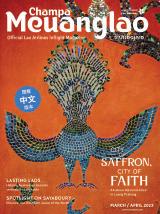
Luang Prabang is a very spiritual place with Buddhism woven into the fabric of the city. A monk explains his life and how to respectfully explore the beautiful temple.
It is also Lao New Year season and there is no better place to enjoy the heat, water, and fun of Pi Mai than in Luang Prabang.
The elephant is the symbol of Laos and Sayaboury is home to a large number of them. Make plans to the Elephant Conservation Center and see many of these great creatures.
While you are in Sayaboury, check out other off-thebeaten-path places to visit with a deep dive into each of the province’s districts.
Happy Reading!
The Champa Meuanglao team
In light of the current Covid-19 situation throughout the world, please be aware that certain activities, festivals, sites, businesses, and events mentioned in this magazine may not be open and operating as planned. Do exercise good judgment, maintain safety precautions, and follow the directions of Lao authorities at all times.
PUBLISHING
Editor In Chief Editors
Contributing Editors
Creative Director
Contributing Writers
Jason Rolan
Cameron Darke
Aditta Kittikhoun
Endy Khamsing Monlady Souliyavongsa
Thanouphet Maniseng
Sebastien Duffilot
Albert Leeflang
Anita Preston
Head Photographer
Phoonsab Thevongsa
ADVISORY BOARD
Khamla Phommavanh
Managing Director
Saleum Tayarath
Deputy Managing Director of Commercial and Marketing, ICT
Sitthideth Douangsiththy
Deputy Managing Director of Ground Handling and Cargo
Paithoun Khounsouvanh
Deputy Managing Director of Technical and Flight Operation
LAO AIRLINES STATE ENTERPRISE LIMITED
Headquarters Wattay International Airport Vientiane Capital, Laos Tel: (856-21) 513243-46, Fax: (856-21) 513247 www.laoairlines.com
Follow the official Facebook Page at www.facebook.com/laoairlines to get the latest news and updates from the national carrier of Laos.
DISCLAIMER
ADVERTISING
sales@rdkgroup.la
(856-20) 59596621
RDK GROUP
134 Samsenthai Road, Xiengyeun Village, Chanthabouly District, Vientiane Capital, Laos (856-20) 55731717 info@rdkgroup.la
Champa Meuanglao is published bi-monthly for Lao Airlines State Enterprise by RDK Group. The views and opinions expressed or implied in Champa Meuanglao do not necessarily reflect those of Lao Airlines State Enterprise or its publishing agents. All information in Champa Meuanglao is correct at time of printing. No part of this magazine may be reproduced without the written permission of the publisher.
All rights reserved. Copyright © 2022 by Lao Airlines State Enterprise and RDK Group. www.champameuanglao.com
COVER IMAGE
A mosaic peacock at Wat Xieng Thong
Photo: Anita Preston



















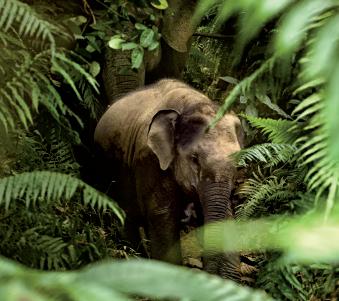























MARCH / APRIL 2023 56 TRAVEL City of Saffron, City of Faith 10 16 20 BUSINESS Lasting Laos CONSERVATION Elephants Forever EXPLORE Welcome Back to Laos! 36 28 FESTIVAL New Year Lao Style SPOTLIGHT Spotlight on Sayaboury CONTENTS 20 28 36 56 64 ON THE AIR Lao Airlines Information 10 16

WELCOME BACK TO LAOS!
TEXT BY JASON ROLAN
It’s been a long time since Laos was able to welcome foreign visitors to the country, but we are delighted to have you back. Three years of closure is a long time, so while you were away, Laos has been developing some new tourist sites, hotels, and restaurants that are sure to enchant you.
 PHOTOGRAPHS BY PHOONSAB THEVONGSA
PHOTOGRAPHS BY PHOONSAB THEVONGSA

THE VIENTIANE-VANG VIENG EXPRESSWAY

For a quick journey to Vang Vieng, this expressway shortens the journey by road to just one hour. It is also a convenient way to reach resorts on the north shore of the Nam Ngum Reservoir, as well as tourist areas near the Nam Ngum Dam.
THE ROCK VIEWPOINT AT PHOU PHA MARN
This adventure destination in Khammouane Province sports an easy zipline, spider net bridge, and via ferrata course set between stunning limestone karsts. Enjoy a stay here in cozy capsules or more luxurious treehouses. There is also a breezy modern branch of the famous Khop Chai Deu restaurant to enjoy the view.

EXPLORE
12
SAO SINH
Sao Sinh is the newest addition to Luang Prabang’s vibrant cultural tourism scene. Billing itself as the fi rst “Rent and Roam” traditional clothing rental service in town, the shop stocks dozens of traditional skirts, blouses, trousers, sashes, jewelry, and accessories in all sizes for visitors to rent for half and full-day wear.

PHOU YA KHA
This rocky mountainous area is great for trekking and camping, and it is easy to access with a local guide, as the trailhead is located just 32 km outside of Oudomxay. One and twonight trekking adventures are available, so you can marvel at impressive views and unusual rock formations only found here, as well as breathe fresh mountain air as the stars twinkle overhead.

13 MARCH / APRIL 2023
SOUPHATTRA HOTEL
Luang Prabang’s chic new address for affordable luxury. The 37 guest rooms are lovingly decorated with just the right amount of stylistic Lao touches. The impressive 25-meter turquoise swimming pool is a great place to sample the array of cocktails and refreshments before a delicious meal at the hotel’s Lao Derm Restaurant.


THE ACADEMY TRAINING HOTEL AND RESTAURANT
This new spot in Vang Vieng welcomes guests for overnight stays, meals, meetings, and workshops. It offers tourism and hospitality students a unique practical training environment. Staffed by students, these budding young professionals are overseen by their teachers and an international management team while developing their core skills and preparing to enter the workforce.
EXPLORE 14
THE LAOS-CHINA RAILWAY
This electric train travels at 120 kph through the beautiful landscape, across 62 kilometers of bridges, and through 198 kilometers of tunnels to the Chinese border. The railway is a convenient way to reach off-the-beaten-path areas such as Kasy, Meuang Nga, Nateuy, and Boten, in addition to tourist standards like Vang Vieng, Luang Prabang, and Oudomxay.

Mr Bee, Reservation Manager reservation@parasol-blanc.com www.parasol-blanc.com
Tel: +856 71 252 124

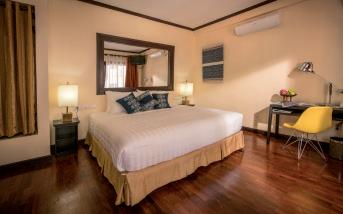
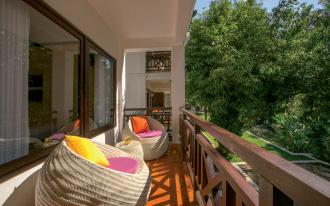
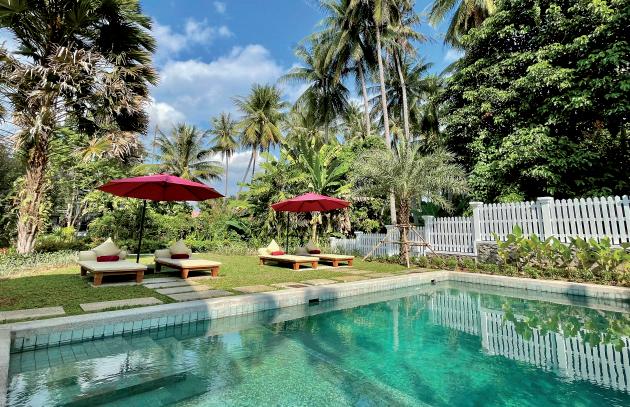
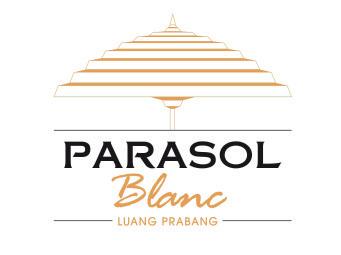
 Located a 15-minute drive from Luang Prabang International Airport, Parasol Blanc is an eco-friendly hotel, and offers 30 comfortable rooms, all with private balcony, surrounded by a lush abundant tropical garden, a swimming-pool and a beautiful Lotus pond.
Located a 15-minute drive from Luang Prabang International Airport, Parasol Blanc is an eco-friendly hotel, and offers 30 comfortable rooms, all with private balcony, surrounded by a lush abundant tropical garden, a swimming-pool and a beautiful Lotus pond.
CONTACT
11 Phouvao Road, Ban That Luang, Luang Prabang, 06000, LAO PDR
LASTING LAOS
TEXT
LAOS
& PHOTOGRAPHS BY THE SUSTOUR
PROJECT / PLAN INTERNATIONAL LAOS
MORE INFO
SUSTOUR Laos Project Office (LNCCI building)
Kaysone Phomvihane Ave, Phonphanao Village, Saysetha District, Vientiane Capital, Lao PDR P.O. Box: 4596
The SUSTOUR Laos project is funded by the European Union and implemented by Plan International Laos in cooperation with the Department of Trade Promotion of the Ministry of Industry and Commerce (MoIC), the Lao National Chamber of Commerce and Industry (LNCCI), and the European Centre for Ecological and Agricultural Tourism (ECEAT).

The project is implemented in 11 districts across Luang Prabang Province, Vientiane Province, and Vientiane Capital and running until mid-2024. The project aims to improve the sustainability of the Lao tour-
ism industry by integrating MSMEs into tourism industry supply chains through the promotion and certification of sustainable consumption and production practices of local MSMEs by awarding businesses with Travelife and Lasting Laos certification.
After the pandemic, the tourism sector begins to revive, which has significantly increased the income of the local communities. While tourism is one of the largest economic sectors in the world and generates a lot of jobs, it also accounts for 8% of global greenhouse gas emissions.
Post-Covid 19 has provided us with a chance to begin making new improvements and shift to more sustainable tourism. At the same time, there is a growing need for sustainability in tourism across the world. Many consumers and travelers expect businesses to operate the businesses responsibly. Therefore, Lasting Laos certification will play an essential role to support businesses to enhance their sustainability.
BUSINESS
Helping businesses become certifi ably sustainable
16
Lasting Laos certification



Lasting Laos is a sustainability certification adapted from the Travelife sustainability certification with the aim to support local tourism businesses to improve their sustainability. The certification has been developed as part of the SUSTOUR Laos project (funded by the European Union) and administered by the Lao National Chamber of Commerce and Industry. Eligible businesses include businesses in four key sectors of the Lao tourism industry: (1) Transportation; (2) Food & Beverage; (3) Handicrafts & Souvenirs; and (4) Cultural Excursions.
The benefits of the certification

The certification program will enable businesses to improve the sustainability of their operations and supply chain. Through locally adapted sustainability criteria and guidance, based on international best practices from Travelife, businesses can measure and improve their sustainability. The SUSTOUR Project will provide the business with the training and coaching needed in order to help them achieve the certification. Other benefits of becoming a certified sustainable business include:
Access to new markets and customers which prioritize sustainability, including Travelife-certified businesses in Laos (accommodations, travel agents, and tour operators) and tourists.
The businesses can be listed in a supplier database on the Travelife website accessible to Travelife-certified businesses in Laos and around the world.



Receive recognition and promotion of the business through online and offline marketing, award ceremonies, and other promotional activities supported by the SUSTOUR project.

Realize cost savings through sustainable practices in energy, water, and waste management.








Eligibility



Eligible businesses include micro, small and medium-sized enterprises in the transportation, food & beverage, cultural excursions, and handicraft & souvenir sectors. The businesses must be located in a SUSTOUR project area: Vientiane Capital, Vientiane Province, and Luang Prabang Province.

Membership

During the lifetime of the SUSTOUR Laos project (until July 2024), there will be no cost for businesses to attain the certification. The certification is valid for a period of 2 years. In order to maintain the certification status, the businesses must pass an assessment every 2 years.

Where to start?
The Lasting Laos certification process is comprised of training, and coaching which will support the business to be fully compliant with the criteria until receiving the certification. These steps are:
1. Start off by engaging the business by applying online through https://bit.ly/LLapplicationform or scan the QR code or through hardcopy which can be requested at the local chamber of commerce and industry office.


2. After submitting the application, the businesses to schedule an optional online or in-person introductory training on Lasting Laos criteria with LNCCI, supported by the SUSTOUR Project.


3. Apart from the introductory training, the business can request one-on-one coaching which is also provided as needed. A coach will be assigned to the businesses and available throughout the certification process.
4. The business completes the internal reporting process and prepares relevant supporting documents to demonstrate compliance with the sustainability criteria.

5. Once the business is ready, submit a request to have an assessment which will be conducted by a trained assessor from LNCCI who will conduct the assessment on-site.
6. After the business can demonstrate 100% compliance with the mandatory sustainability criteria, the business will be awarded. If not, the businesses will be given time, with ongoing support from LNCCI and SUSTOUR project, to be 100% compliant with the criteria.

17 MARCH / APRIL 2023
Lasting Laos Application Form facebook.com/ lastinglao
nuankc
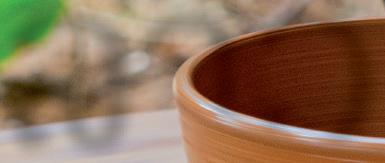



BUSINESS
18





















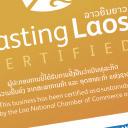

Lasting Laos Application Form facebook.com/ lastinglao 19 MARCH / APRIL 2023
ELEPHANTS FOREVER



Travel off the beaten path and learn about Laos’ emblematic animal


 TEXT BY SEBASTIEN DUFFILLOT
TEXT BY SEBASTIEN DUFFILLOT




 PHOTOGRAPHS BY PAUL WAGER
PHOTOGRAPHS BY PAUL WAGER

CONSERVATION
20
Off the beaten path in Northern Laos is a beautiful, little-known province connecting Luang Prabang and Vientiane: Sayaboury. Sayaboury is the historical homeland of Lao elephants. This is where you can meet them, in their natural habitat.

The Elephant Conservation Center of Laos (ECC) is the largest and oldest operating rescue center and sanctuary for elephants in Laos. Located 7km from Sayaboury town, on the banks of the breathtaking Nam Tien Lake, and about two and a half hours from the cultural capital of Luang Prabang, the Center opened its doors in 2010. It is sheltering the largest elephant herd in the country - about 30 pachyderms, including 10 males, representing 10% of the national stock - and is now becoming the official elephant nursery of Laos thanks to its pioneering reproduction program. Sayaboury is home to 75% of the country’s elephants under human care, and it also has the second-largest continuous wild elephant population, which lives in the Nam Pouy National Protected Area. Originally used for dangerous logging operations, captive elephants are now facing a new challenge.
With logging officially banned in Laos, Lao mahouts have to fi nd new employment for their elephants. Some managed to transition to tourism but many have not, either because camps can’t employ more, or because their elephants are not suitable for public display (this is mostly the case for adult male elephants, considered
left: A mother and calf forage in the forest

1. A herd of elephants that lives at the center
2. Visitors marvel at these magnificent creatures
3. Elephants come to drink at the Nam Tien Reservoir
4. Sunset on the Nam Tien Reservoir

more dangerous than females). The Elephant Conservation Center offers a solution to mahouts who can’t bear the burden of raising an elephant without making an income. It also rescues abused elephants kept in sub-standard conditions or elephants confiscated from illegal trafficking rings.
The mission of the Elephant Conservation Center is simple: RESCUE, REHABILITATE, REPRODUCE, REWILD. There are 10 elephant deaths for 1 birth in Laos. If the trend continues, the population of elephants in Laos won’t self-perpetuate within two to three decades. There are only 400 captive elephants and about the same number of wild elephants left in Laos. It is extremely urgent to breed and protect them and their ecosystem.

1 2 3 4 21 MARCH / APRIL 2023
“IT IS EXTREMELY URGENT TO BREED AND PROTECT THEM AND THEIR ECOSYSTEM.”
ACES "Conservation Gold" Award 2022
Asian elephants are listed as critically endangered on the IUCN species red list. The ECC’s mission is to produce baby elephants and provide formerly captive elephants with a new life. Here, they receive expert health checks from the best elephant vets in the world; they partake in the only socialization program for elephants in Laos so that they can join a group of elephants and form a strong family following the natural matriarchal pattern found in the wild; eventually, they are released in the wild, in the neighboring Nam Pouy National Protected Area (4 elephants were released in March 2019).
If you want to contribute to the conservation of the elephants of Laos while enjoying a ‘one-in-a-lifetime’ meeting with the sacred and emblematic animal of Laos, a visit to the Elephant Conservation Center is a must! Not only will you discover a new province that few travelers have visited (while enjoying a beautiful ride with the ECC minivan connecting Luang Prabang to Sayaboury daily), but you will learn everything about Asian elephants with international experts and spend time face-to-face with the gentle giants of Laos.
GETTING THERE
Lao Airliines has daily flights to Luang Prabang from many cities.
The ECC has a free minivan (approximately 2 hours) every morning from Luang Prabang, with prior booking at ECC Office, Mekong Riverside, Ban Pakham, Luang Prabang.

MORE INFO
Tel: +856 71 252307 and +856 20 96590665 or online elephantconservationcenter.com
CONSERVATION
Above: This cozy, charming cottage for the center's volunteers has incredible views.
The ECC welcomes visitors for 2, 3, or 4 days. A 7-day eco-volunteering package is also on offer. Accommodation is in private bungalows overseeing the Lake. Packages are all-inclusive (transport, meals, accommodation, and visits).
22










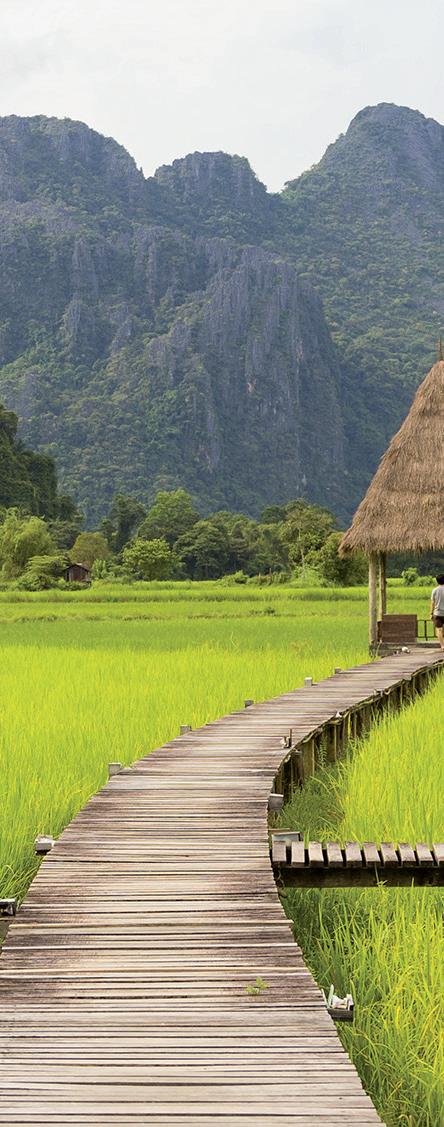
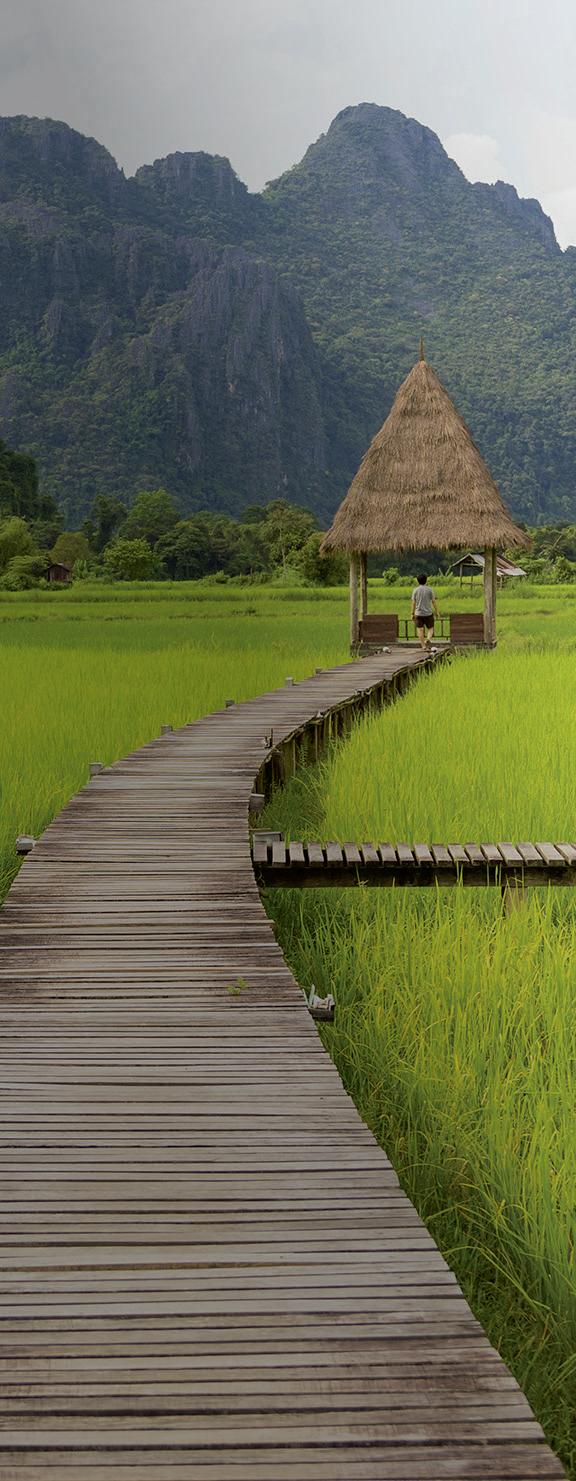

















ໂຄສະນາ + 856 2 0 s a l e s @r dk gr YOUR AD HERE! 广告招租 662 1













CONSERVATION 24


1 2 25 MARCH / APRIL 2023

CONSERVATION 26
ACES "Conservation Gold" Award 2022

27 MARCH / APRIL 2023
LAO STYLE

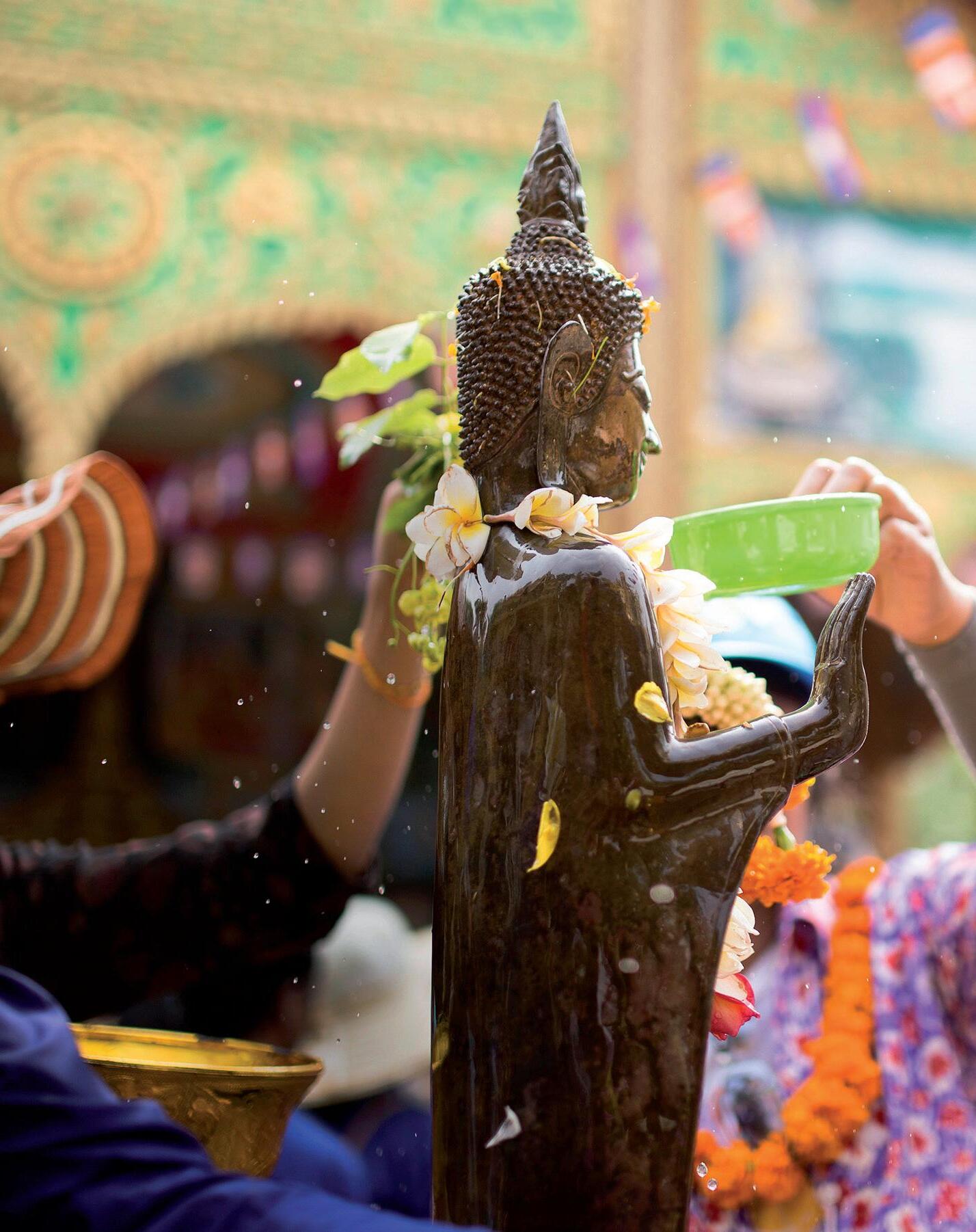 TEXT BY JASON ROLAN
TEXT BY JASON ROLAN







 PHOTOGRAPHS BY PHOONSAB THEVONGSA
PHOTOGRAPHS BY PHOONSAB THEVONGSA
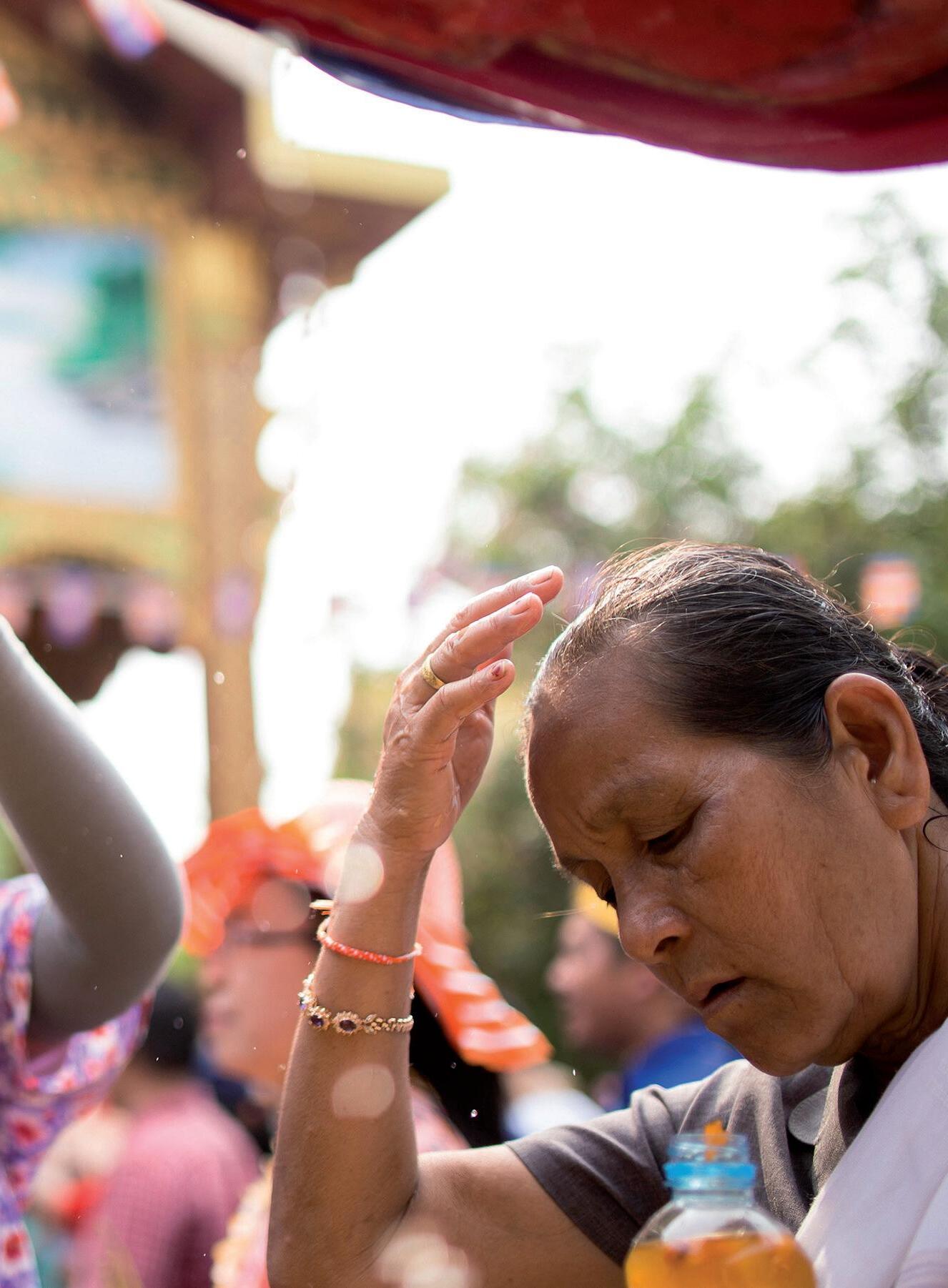

MARCH / APRIL 2023
A woman anoints herself with holy water that runs off of this Buddha image
The Lao New Year, also known as Pi Mai, is Laos’ largest celebration and observed nationwide. It is customarily a time for purification and rejuvenation, but it is also an opportunity for everyone to let loose and party nonstop for three days like only Lao people can. Towns and cities all throughout Laos come alive with street festivals and water fights in addition to the custom of visiting the temple to sprinkle scented water over Buddha statues. Get ready to be fully sprayed with water in any open location - no one is excluded. This actually makes the hottest period of the year more enjoyable. If you are in Laos during this time, the best approach to enjoy the Lao New Year is to unwind and let things happen naturally.

FESTIVAL
30


 left: Buddhas large and small are washed
1. Beauty pageants are held to select Miss New Year
left: Buddhas large and small are washed
1. Beauty pageants are held to select Miss New Year
1 2 31 MARCH / APRIL 2023
2. Water fights are common along the road all throughout Laos
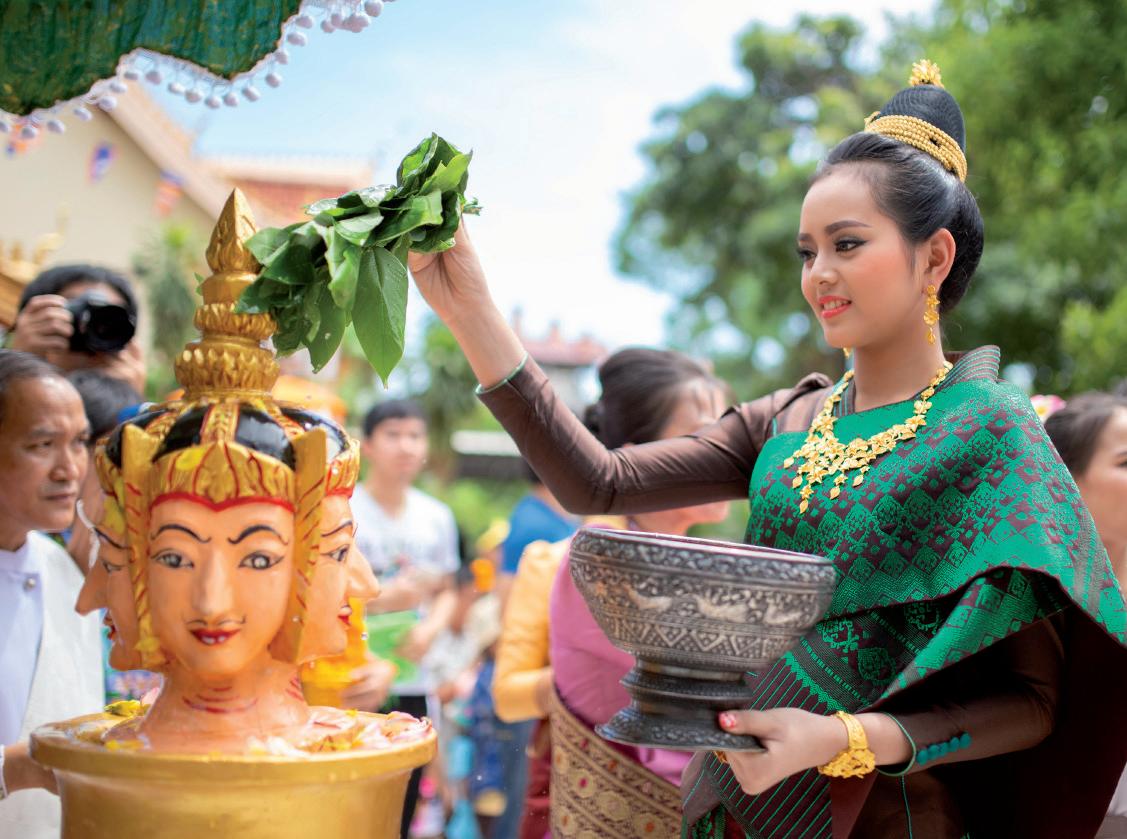
FESTIVAL 32





1 2 3 33 MARCH / APRIL 2023


FESTIVAL 1 34






















SPOTLIGHT
SAYABOURY ON


Discover the Unknown Jewel of the North



 TEXT BY ALBERT LEEFLANG & SEBASTIEN DUFFILLOT
TEXT BY ALBERT LEEFLANG & SEBASTIEN DUFFILLOT

 PHOTOGRAPHS BY ALBERT LEEFLANG / SEBASTIEN DUFFILLOT
PHOTOGRAPHS BY ALBERT LEEFLANG / SEBASTIEN DUFFILLOT
Acolorful mix of fact and folklore reveal Sayaboury’s past, which reaches back some 700 years. Most religious and natural sites have an interesting history embellished by legend. Ethnic diversity also marks Sayaboury, including small communities of rarely seen Phrai and Iu Mien.

A journey to Sayaboury may be testing, but this truly authentic Lao experience delivers memories of a lifetime. Sayaboury is best known for its yearly Elephant Festival in mid-February and its Elephant Conservation Center. But the province has much more to offer!
Sometimes known as Ghost Festival, the Phi Tha Khon Festival is the most common name for a group of festivals held in Paklay District of Laos’ Sayaboury Province and Loei Province in Thailand. The events take place over three days sometime between February and April, the dates being selected annually by the town’s mediums. The whole event is called Boun Phavet, part of a Buddhist merit-making holiday. The first day is the Ghost Festival itself. The town’s residents invite protection from the Phi Ta Khon, the spirits of people’s eyes. They then hold a series of games and take part in a procession wearing masks made of rice husks or coconut leaves with hats made from rice steamers, plus patchwork clothing. They also wear bells and wave wooden phalluses. The second day of the festival incorporates elements of the Rocket Festival, plus costume and dance contests and more parades. On the third and final day, the villagers listen to sermons from Buddhist monks.
 A scenic outcropping overlooking a valley in Sayaboury
A scenic outcropping overlooking a valley in Sayaboury
37 MARCH / APRIL 2023
Another marvel of Sayaboury province is the Nam Pouy National Park, home of the second largest herd of wild elephants in Laos, and an untouched biodiversity-rich protected forest. Nam Pouy is Laos’ only National Protected Area (NPA) west of the Mekong. It occupies 1,912 km2 of Sayaboury’s Phiang, Paklay, and Thongmixay Districts along the Thai border in the central part of the province. Steep and rugged ridges –mostly of Mesozoic sandstone and shale, with limestone outcrops at their bases – characterize the NPA’s terrain, with peaks reaching 1,790 meters in the west.
Researchers have found evidence of 50 mammal species in the NPA including an estimated 60 wild elephants, the second largest contiguous population in Laos, along with gaur, tigers, dholes, serows, and Asiatic black bears. The Nam Pouy is the northernmost home of silver langurs and even lar gibbons.
A small enclave in the Nam Pouy NPA, Thongmixay District has enough to offer in terms of the natural landscape, rural villages, old Buddhist temples, and farmland, all connected by dusty sand roads. Thongmixay
Above: The masked ghost festival is held in Paklay in February/ March
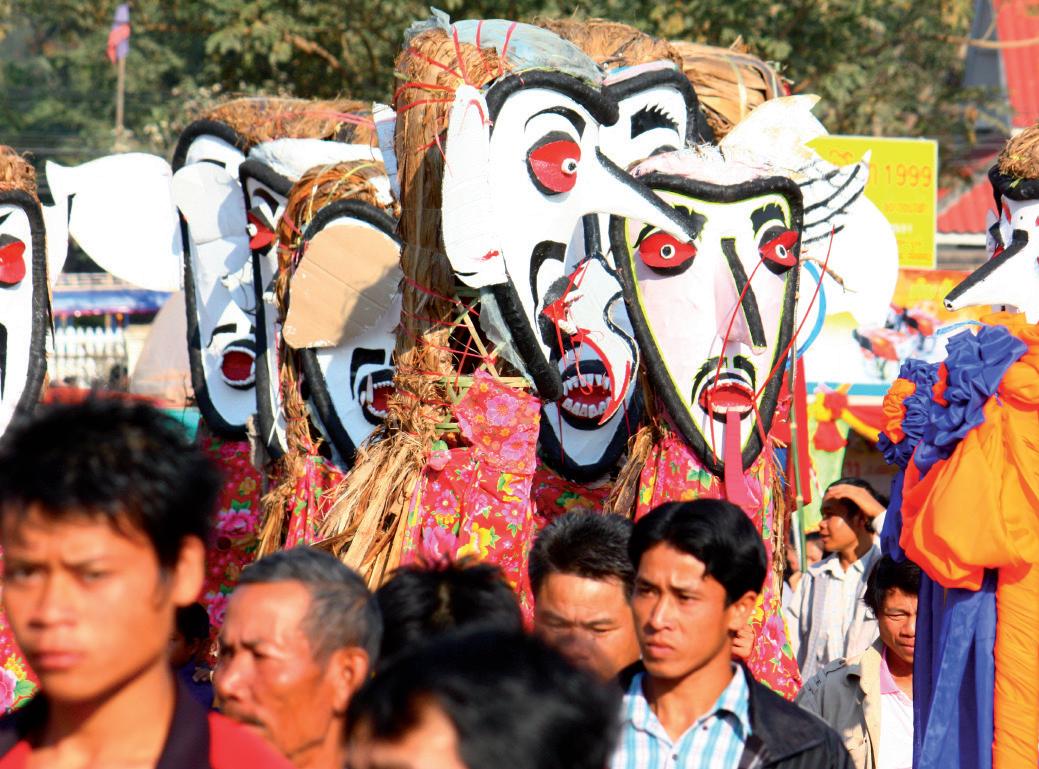
1. Local people practice their traditional livelihoods
2. Ethnic groups are proud of their heritage
3. Sayaboury is one of the last homes of wild elephants in Laos
has long been considered a “strategic” territory because, during the 1980s, it was the scene of a clash between Laos and Thailand, which was then claiming the right bank of the Mekong. Against all odds, Laos pushed back the invader, despite inferior military forces. A victory that still resonates among the inhabitants of Thongmixay District, the “rice paddy of victory”.
Apart from the presence of seventy domestic elephants, one of the largest concentrations in Laos, the district is also a seasonal stop for wild male elephants that come to breed with the females kept shackled at the edge of the forest during the winter months. All small elephants born in Thongmixay have wild fathers. Now all wild elephants in Nam Pouy are monitored and protected by the Elephant Conservation Center (ECC) which also released 4 of its own elephants into the wild in March 2019, a first in Laos.
The main town, Thongmixay, is located in the southern part of the district, and is most easily reached by turning west in Paklay. The road follows through small villages portraying the so typical Lao countryside before it reaches Thongmixay in about 1.5 hours.
SPOTLIGHT 38
MEUANG PHIANG

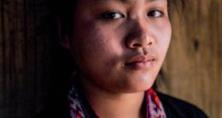
Boun Kong Khao Yai (Rice) Festival
The festival is organized every year end of January in Somsavanh Village, Phiang District about 37 km south of Sayaboury town. The festival includes many activities such as a market fair, rice procession, drum beating contest, singing contests, traditional performances, and many other activities designed to celebrate the rice harvest in this region renowned for the importance of its rice fields and farmlands.
SAYABOURY OVERVIEW
Location: Northwestern Laos
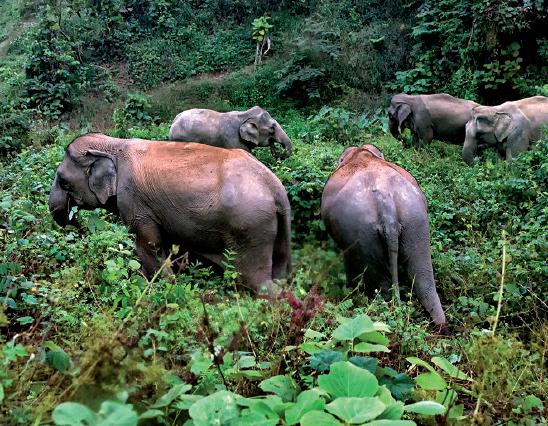
Total area: 16,389 km2


Population: 374,000
11 Districts: Sayaboury, Khop, Hongsa, Ngeun, Xienghone, Phiang, Paklay, Kenthao, Saysatthan, Boten & Thongmixay

www.tourismsayaboury.org

GETTING THERE
Lao Airlines flies daily to Luang Prabang and one can connect overland by road to Sayaboury.
Buses and minivans depart daily from Luang Prabang Southern bus station (2.5 hrs) and Vientiane Sikhay and Northern bus stations (6 hrs via Sanakham and Paklay).
Sayaboury town can be reached by road from Vang Vieng and Hongsa (via Pakbeng).
From Thailand via the International Border Checkpoint at Meuang Ngeun.

1 2 3 39 MARCH / APRIL 2023
2 NEW “LOOPS” FOR DEMANDING TRAVELERS
The North-South Mountain Trail
If you are traveling from the Golden Triangle to Luang Prabang, you may consider getting off the boat in Pakbeng (Oudomxay Province) and boarding a minivan to Hongsa and onto Sayaboury and further to Paklay. From Paklay, you can cross the Mekong on the brand-new bridge and continue to Vientiane. Alternatively, you can aim south into the “unknown” districts of Kenthao and Boten!
Though off the beaten track, Paklay’s three closeknit caves and hot springs present a memorable day tour, as does Boten’s easy-to-reach, legendary Thad Ham Waterfall on Phoudaeng (Red Mountain) near the municipal center.
For an exciting addition to a trip between Vientiane and Luang Prabang, plan on spending a few days on Sayaboury’s North-South Mountain Trail.
Luang Prabang
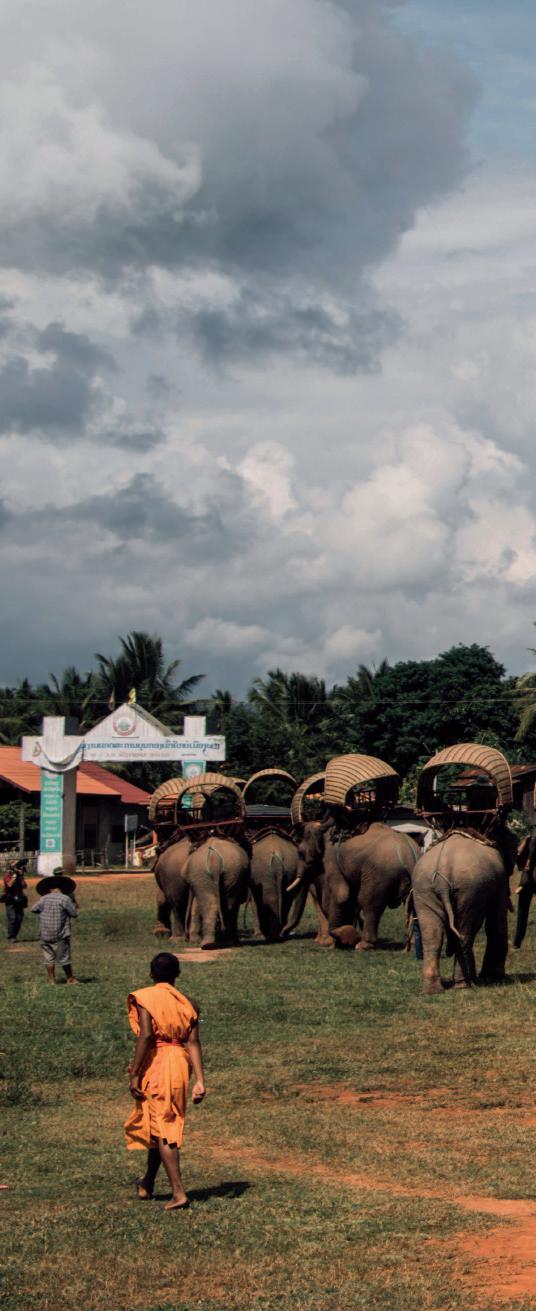
- Sayaboury - Luang Prabang
You can venture on a 2-to-3-day motorbike trip starting in Luang Prabang by aiming west to Kouang Si waterfalls and then along the Mekong onto Meuang Nan District. From there, turn right to Sayaboury town and visit the Elephant Conservation Center (advance booking required). Then, use Road No. 4 north to return to Luang Prabang.
SPOTLIGHT
40
Above: Meuang Phiang holds a large haystack festival in January/February each year

41 MARCH / APRIL 2023
MOUNTAIN TEA AND ETHNIC GROUPS Focus on Saysatthan District
GETTING THERE
By car take the road in Sayaboury town to the northwest after the airport. The road heads up the mountains for 65 km before arriving in Saysatthan town.
Below: Laos' mountains from the air are quite breathtaking

1. Lao tea is freshly picked for brewing
2. Enjoy a fragrant cup of Lao tea
Saysatthan District, situated west of Sayaboury, is covered with mountains, rural villages, and traditional tea plantations. The main town, Saysatthan, seems isolated on top of a boundless mountain ridge about 70 km from Sayaboury.
The asphalt road leading to Saysatthan always twists and turns through the peaks, passing through rural villages with spectacular views. Often life happens near the road: villagers doing their daily rites, a farmer carrying huge bamboo poles on his shoulder, a group of kids walking to a nearby school, and girls washing clothes in a river outside the village. The mountains are covered with a blanket of small trees and farmland. This is the land of mountain tea. Before you reach Saysatthan, you can visit the tea plantation of “Saysatthan Sa” and see the small factory with machinery for
drying, chopping, and rolling the tea leaves. Sip a cup of this freshly brewed green mountain tea while enjoying the wide view, and soon imagine yourself on top of the world. Saysatthan, set on the top, is a pleasant and charming town, with well-kept roads and houses. Some larger government buildings surround the town.
From here you can visit other nearby mountain villages and wander around and eat a simple bowl of soup and visit with locals, the experience itself is rewarding, to say the least. In Saysatthan you can stay in a simple but clean guesthouse situated in the center of town, the only one in Saysatthan. If you travel by motorbike there is an unpaved, dirt road that ends all the way in the town of Hongsa. This often difficult and long rural track travels through a landscape of mountains and forest where life is still untouched and pristine.
SPOTLIGHT
42
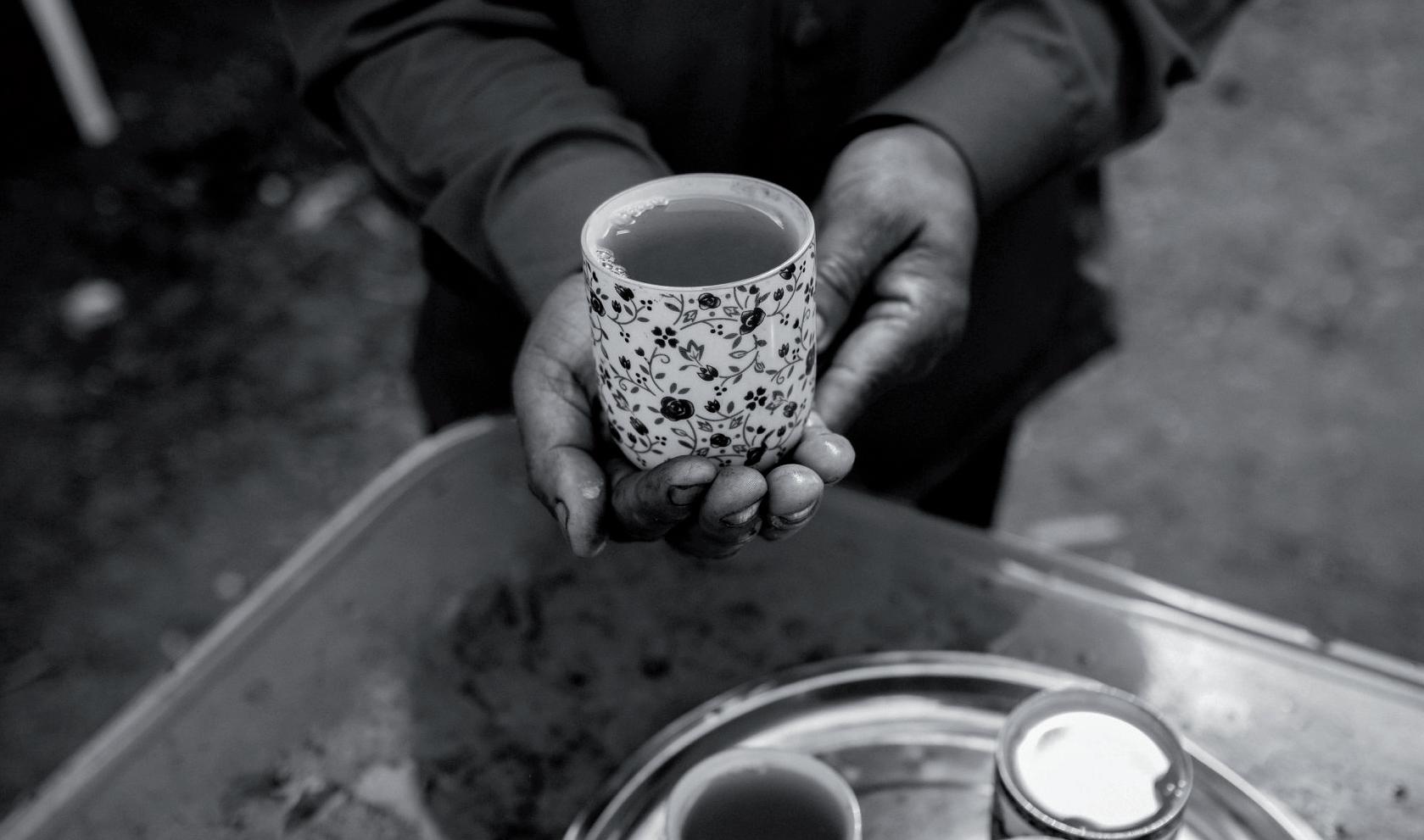
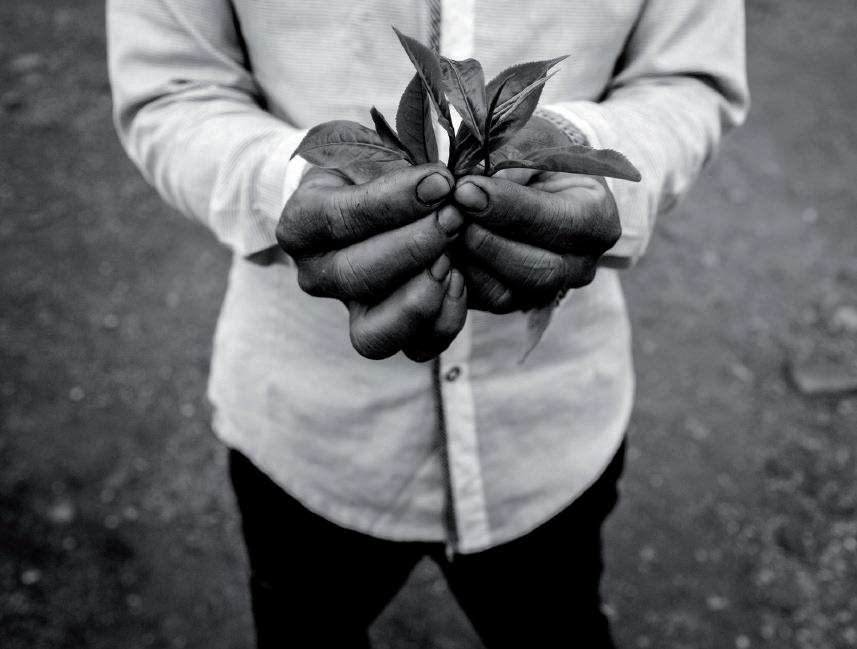


1 2 43 MARCH / APRIL 2023
NAM TIEN LAKE, SAYABOURY ELEPHANT CONSERVATION CENTER
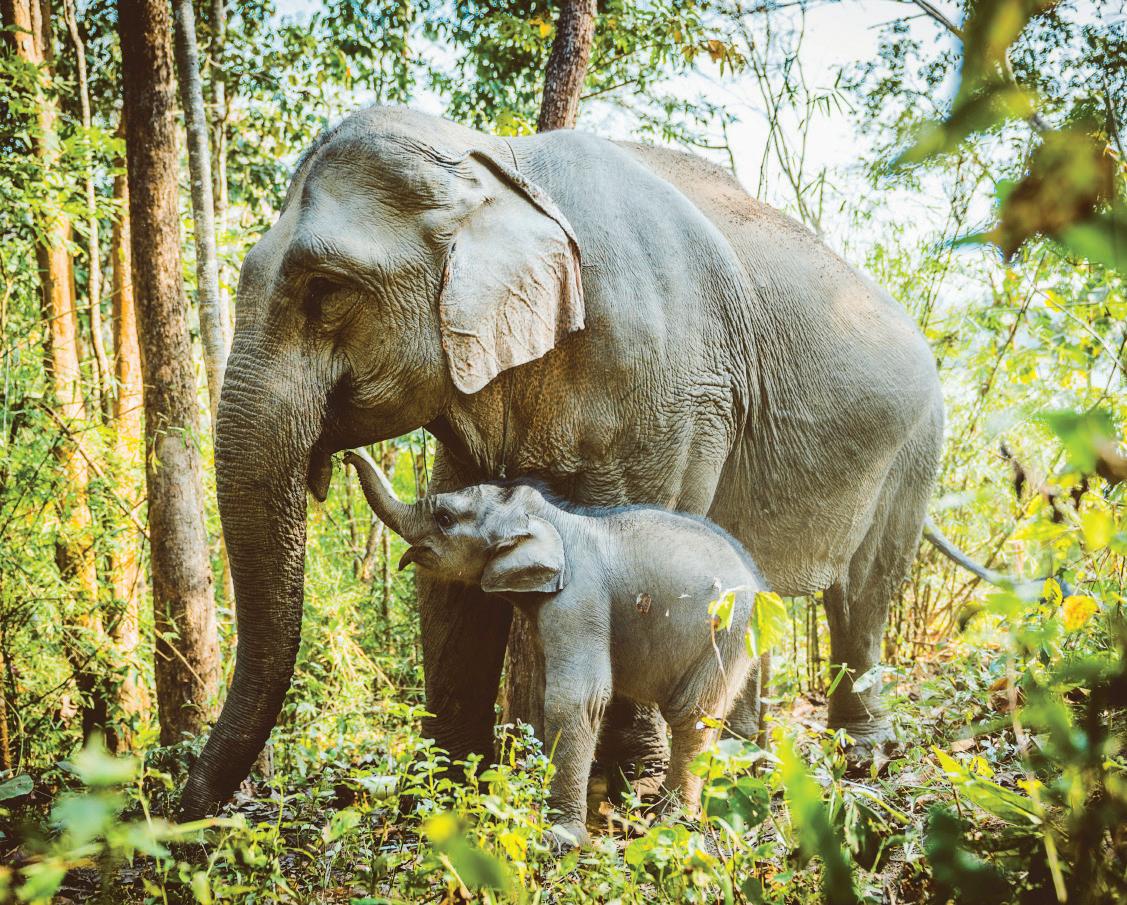
Elephants: If you want to see elephants being elephants in their natural habitat, this is the place to visit (by advance booking only). Set on the wonderful Nam Tien Lake and surrounded by the ‘Elephant Mountain’ range, the ECC offers 2 days, 3 days, 4 days, and 1-week programs to share the lives of the magnificent symbolic animal of Laos.
elephantconservationcenter.com
SPOTLIGHT MORE INFO
20 96590665
+856
44

45 MARCH / APRIL 2023
SAYABOURY’S ELEVEN DISTRICT
KHOP INTO THE WILD
Phou Pha Daeng (Red Cliff), Khop District’s highest peak and the 2,200-ha Phou Pha Daeng Mountain Conservation Area’s centerpiece, rises 1,488 meters above the 10-km-long ridge in the heart of the district. Along with two fascinating caves, the conservation area is home to deer, tigers, bears, monkeys, and a variety of birds.
XIENGHONE LAND OF PEACE
An adventurous three-hour ride from Ngeun will bring you to Xienghone District. Famous for its ancient Xienglom Stupa dating to 1305, Xienghone is a charming quiet place. For traditional lifestyle and weaving explore Ban Khing and Ban Kham. Close to Ban Kham a perfect place for meditation is Vat Otoumkham – located in the middle of the forest. Don´t miss visiting the cave of the giant bats! For information on tours and transport services please contact the Tourism Office.
PHIANG FARMING THE LAND
Phiang, a major rice farming area of Laos, has several natural and cultural wonders to offer to the adventurous traveler. The Tham Aram (Monastery Cave), hot springs near Pakklak, and the Tham Phawai (Rattan Cave) near Ban Somsavath where you will see many Buddha images. The Rice Festival in Phiang is also a must-see in this little-known but very rich region of Sayaboury. Phiang is also one of the entry points into the wonderful Nam Pouy National Park.
THONGMIXAY PROTECTING ELEPHANTS
Laos’ only National Protected Area (NPA) west of the Mekong, the Nam Pouy occupies 1.912 Km2 along the Thai border. Steep and rugged ridges mostly of Mesozoic sandstone and shale characterize the NPA’s terrain, with peaks reaching 1.790 meters. Nam Pouy has the world’s easternmost native teak forests and seasonal evergreens along rivers. 50 mammal species including an estimated 80 wild elephants inhabit the forest along with gaur, tigers, dholes, serows, and Asiatic black bears.
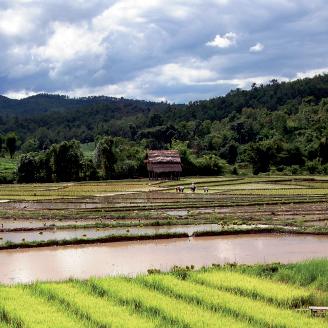

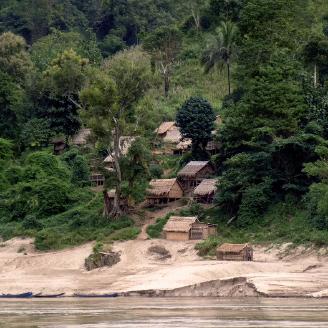

SPOTLIGHT
2 1
4 3 46
BOTEN — GRACED BY NATURE
Boten’s easy-to-reach, lore-filled Tad Ham Waterfall on Phoudaeng (Red Mountain) near the municipal center makes for a very interesting journey in the southernmost district of Sayaboury Province. Visitors can trace the way to the falls along a 3 km road from the Boten District center. A trail from the road leads to the peak of Phou PhaDaeng (Red Mountain), one of the area’s highest, and a great view of the red limestone formations all the way to Thailand.

HONGSA HISTORY AND WEAVING
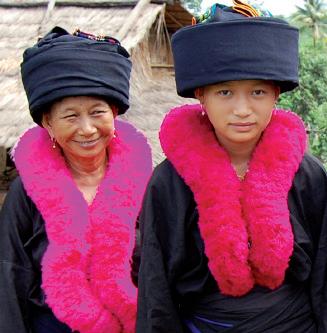


Weaving. The Lue village Ban Viengkeo is most famous for its elaborate weaving traditions. Dye yarn from homemade natural colors and learn how to weave. Ban Viengkeo is located very close to Hongsa town, and just a one hour ride away from the Mekong boat landing Tha Suang, and two hours by car from Sayaboury.
SAYSATTHAN — PEOPLE FROM THE HILLS
Prying into the Phrai. Sayaboury’s Saysatthan District is one of only two Lao provinces the country’s 15,000 or so Phrai call home, and their distinct culture, language, and lifestyle vary widely from most other minority groups. They inhabit the mountains in Saysatthan. They have no written language, and since metal is taboo, they have mastered bamboo to create almost all of their household needs.
SAYABOURY — ELEPHANT HERITAGE TRAIL
The Province’s Capital. The city hosts the famous Elephant Festival every year in mid-February. The festival commemorates the nation’s living icon. The two-day celebration, filled with elephant-related activities and performances, kicks off with an elephant procession and monks’ blessing. The town is surrounded by the gorgeous Elephant Mountain Range.
6 5
8 7 47 MARCH / APRIL 2023
PAKLAY – CROSSING THE MEKONG

Known for its cave clusters, hot springs, and sacred Vat Sisavangvong temple (one of Laos’ three highest regarded temples), and steeped in history, culture, and nature, Paklay acts as a gateway to the province’s south and Sayaboury District. Exploring the district center’s side streets reveals several old wooden buildings and temples. Besides the Phavet and Rocket Festivals, the district hosts longboat races with 50-to-70-person squads.
KENTHAO – THE SOUTHERN GATE
Mountains, waterfalls, temples, and legends hold the secrets of Kenthao’s past. The district borders Thailand and has an international border checkpoint at the Nam Heuang Thai Friendship Bridge, which welcomes Thais visiting from Loei Province. Vat Siphoume, the district’s most sacred site is a 15th-century temple that reveals stupas for Phengsi and Thodam, two legendary characters. A visit to Tad Ham Waterfall, dropping 15 meters over massive rocks into a large, clear pool is a must-see.

NGEUN – LAND OF COTTON
Crossing the international border checkpoint from Thailand in Ngeun or coming from Pakbeng (Oudomxay), book a tour at the Tourism Office and witness the mystic secrets of the spiritual ritual of natural indigo dyeing. Visit the “Sayaboury Cotton Farmers” – and observe all steps of traditional Lao cotton processing, from plant to fabric. At Ban Nangoua witness hand-made pottery production. A walk through rice paddies will reveal a natural highlight, the Earth pillars (Saodin). And don’t miss the opportunity to listen to the mystic story of the silver elephant at Vat Si Boun Yeun Temple.

SPOTLIGHT
10 9
11 48
THE FOUR NORTHERN DISTRICTS
Sayboury Province’s four northern districts - Hongsa, Ngeun, Xienghone, and Khop - will take you off the beaten path right into the land of ancient spiritual beliefs and handicraft traditions. En route to Luang Prabang and Vientiane, or on your way to and from Northern Thailand, Sayaboury - the “Land of the Elephants” - is a perfect stop in between - just stay another day!
FESTIVALS: Enjoy vibrant festivals such as the Boat Racing Festival, the Spiritual Ghost Festival, Pi Mai Lao (New Year), or Khmu New Year. And every February the must-go for all friends of pachyderms is the national Elephant Festival – don´t miss it!
MYSTIC: All year round you can learn about ethnic minority groups like the Lue, Yuan, Iu Mien, Phrai, Hmong and Thai Dam; each with unique beliefs in spirits of nature and Buddhist rituals that reveal ancient traditions. Immerse yourself in traditional lifestyles and enjoy the welcoming hospitality of the Lao people.
ADVENTURE: Ready for Sayaboury’s adventures? You will get your money’s worth on Sayaboury’s off-the-beaten-path tours by boat, motorbike, and trekking. Visit the Elephant Conservation Center at the Nam Tien Protected Area and get to meet elephants in their natural habitat in one of Asia’s best-managed sanctuaries!
RELAX: For a tamer adventure head to the Nam Tien Natural Protected Area near Sayaboury city, play golf, or enjoy the view over the lakeside with Lao cuisine. For meditation and a traditional spa, the best spot in town is the Herbal Spa Center at the Nam Heuang River banks.
The four districts are bordering the Mekong River in the North and Thailand in the South. A national road crosses the districts and connects all of them with the provincial capital of Sayaboury. All four districts have access to the Mekong where boat services are available to Bokeo, Oudomxay, and Luang Prabang.
Since December 2008 there is an international border checkpoint in Ngeun District, connecting Thailand, Laos, and China/Vietnam by a new international road linking Nan Province (Thailand), Ngeun District, and Oudomxay province.
Also, the land route from Chiang Mai to Luang Prabang makes traveling shorter, offering beautiful nature on both the Thai and Lao sides.
The steady improvement of the infrastructure for tourism - all districts offer guesthouses, restaurants and public transport - provides new attractive tourism destinations in still remote rural areas. Come and see!
49 MARCH / APRIL 2023





SPOTLIGHT 50
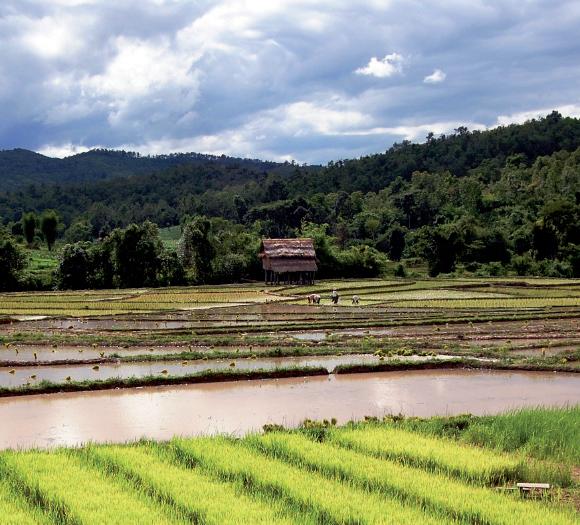
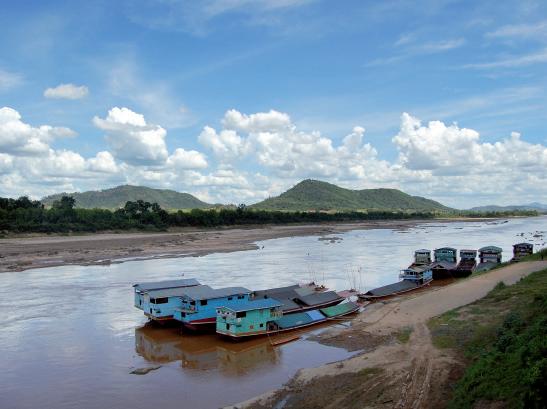



1 2 3 51 MARCH / APRIL 2023
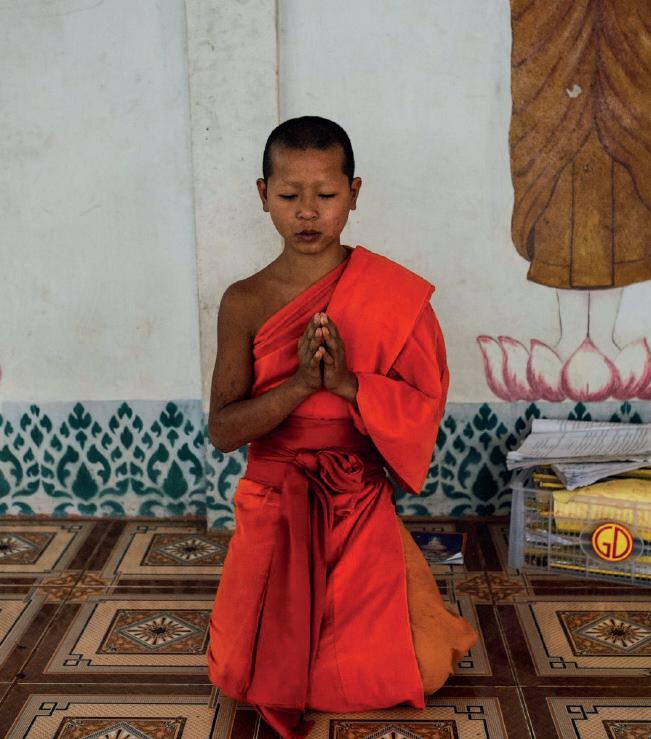
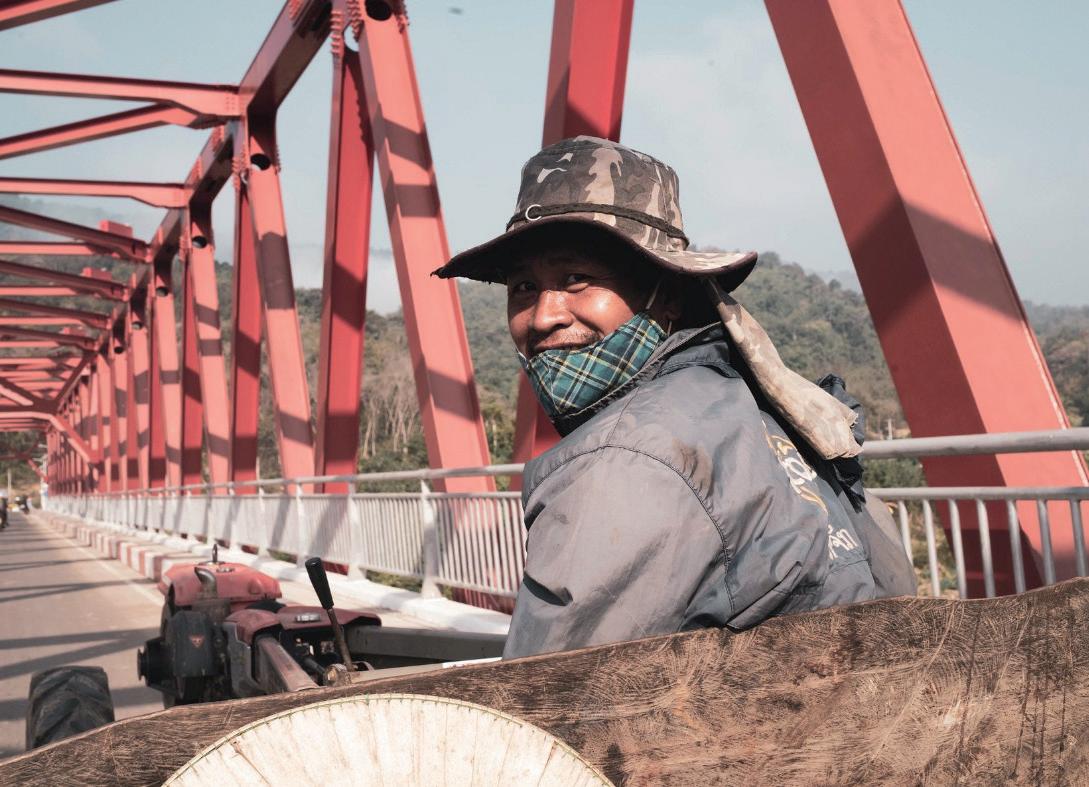


SPOTLIGHT 1 2 52
www.tourismsayaboury.org



3 53 MARCH / APRIL 2023
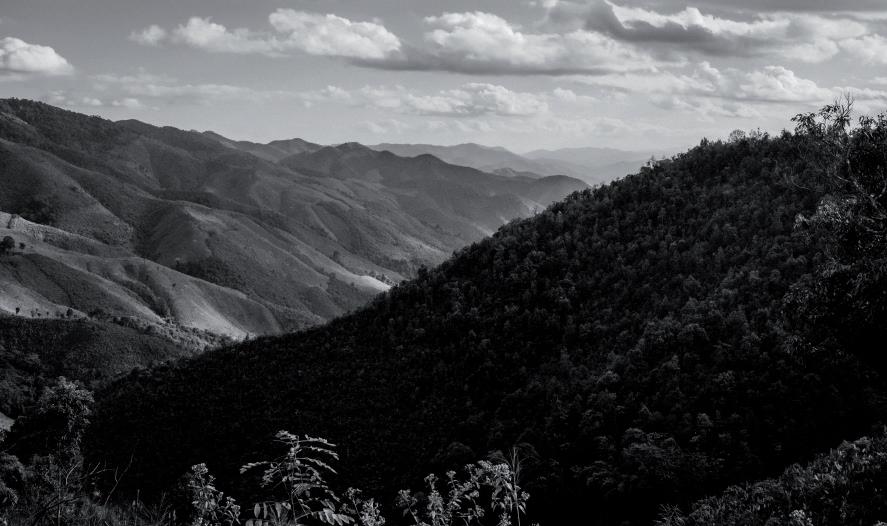
SPOTLIGHT 1 54




2 3 55 MARCH / APRIL 2023
All about the monkhood in Luang Prabang
 TEXT
TEXT


OF FAITH
TRAVEL
BY ANITA PRESTON
PHOTOGRAPHS BY ANITA PRESTON / EVENSONG FILM
CITY SAFFRON, CITY OF 56
Visitors to Luang Prabang are enchanted by the sight of many charming temples scattered around the peninsula. The fact that there are more than 35 temples in the UNESCO heritage zone alone illustrates how important Buddhism is in Laos. Monks in their orange robes are a common sight around the city and you may wonder how and why they chose to be a monk. I spoke with a few monks around the city to learn their viewpoints.
Left: A novice lights a candle in the temple
1. Evening prayers happen in every temple at dusk
2. Locals make offerings to monks during the daily alms round
3. Lines of saffron robed monks are a morning sight in Luang Prabang
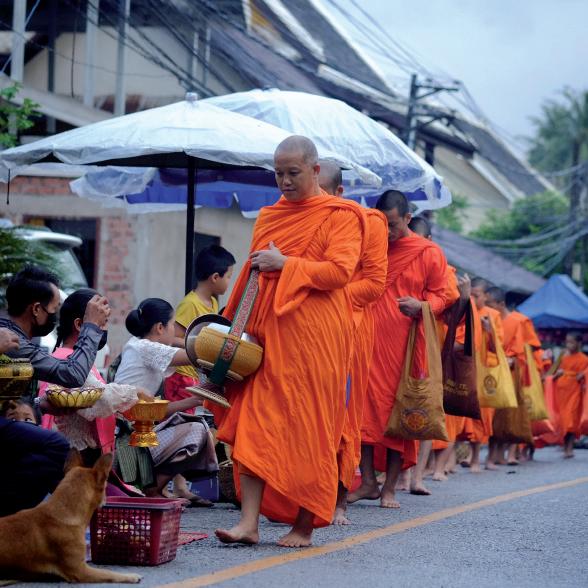
WHAT KIND OF BUDDHISM IS PRACTICED IN LAOS?


Theravada Buddhism is the school of Buddhism that draws its scriptural inspiration from the Tripitaka, or Pali canon, which contains the earliest surviving record of the Buddha's teachings.

HOW DO MONKS AND NOVICES JOIN THE ORDER?
There are many poor rural villages where schooling is not available and parents will send their children to bigger towns to be educated. Temples provide a solid education for their brethren. In Luang Prabang, all males under 18 are educated at the Buddhist Secondary School at Wat Phou Khouay or the Buddhist Elementary School at Wat Mano. They attend school from 8 am to 4 pm. Only males can become novices. Almost every Lao male will have entered the temple as a novice at least once in their life. Usually when a person dies the male relatives will go to the temple, shave their head as a mark of respect and stay at the temple for anywhere from a day to a week to make merit for the deceased. It is also common for a person to become a monk sometime before he gets married to build merit for his parents.
WHAT DO THEY LEARN IN SCHOOL?
Novices study subjects such as mathematics and science and will do exams in these subjects. They also learn more esoteric topics such as Marxist-Leninist political theory, Buddhist lore, and meditation taught by senior monks.
WHAT IS THE DIFFERENCE BETWEEN A NOVICE AND A MONK?
A novice vows to live by 10 precepts (rules to oversee behavior or thought). At the age of 20 novices can vow to live by 227 precepts and become fully ordained monks. In practice, though, many novices will leave the monkhood after their high school education.

1 2 3 57 MARCH / APRIL 2023
THE TEN PRECEPTS FOR NOVICES:
Refrain from killing living things
Refrain from stealing
Refrain from unchastity
Refrain from lying
Refrain from taking intoxicants
Refrain from taking food after noon
Refrain from singing, dancing, playing music, or attending entertainment
Refrain from wearing perfume, cosmetics, and garlands
Refrain from sitting on high chairs and sleeping on luxurious, soft beds
Refrain from accepting money
WHY DO MONKS CHANT?

Chanting is a way to be part of a community, learn the teachings of the Buddha, and also to achieve a sense of calm in preparation for meditation. Each temple decides what to chant but it is usually a sutra (teaching of the historical Buddha) in the Pali language.
TEMPLES AND THE COMMUNITY
Temples are closely tied to the community, not only as a place of worship but where people can turn for material assistance. Often people in need will perform tasks at the temple in exchange for food. In the past, temples also dispensed herbal medicines and were renowned for their knowledge of plants. Just like “healing hands” in Christianity, some monks were also thought to possess supernatural powers to cure the sick.
LIFE AFTER THE TEMPLE
On leaving the temple, some monks become artisans, teachers, or craftsmen. One of the tasks of being a monk is the restoration and repair of buildings and holy artifacts which gives monks tangible skills they can use to make a living. Being a monk also teaches valuable personal qualities such as how to share and be empathetic. Once a monk leaves the temple there is no rule to stop them from going back later in life, if they choose.
Left: A novice at Wat Xieng Thong
Right: Monks and novices partake of their morning meal
TRAVEL
58
WHAT IS ALMSGIVING?
Tak bat (almsgiving) is the giving of food by laypeople to the monks. They will walk a regular route and members of the community will offer them sticky rice. Sticky rice is said to symbolize the glue that holds Lao society together. When a layperson gives alms to the monks it gives them a chance to make merit regardless of their social status.
If you want to participate in this tradition, you should wear a scarf over your shoulder, kneel on a mat and offer sticky rice or some fruit. It’s best for the health of these young people not to give candy or sweets. Sit on the ground below the monks to show your reverence and place your offering in the monks' bowls as they pass by.
As long lines of monks are a photo op not to be missed we do recommend keeping your distance and not using a flash.

WHAT SHOULD I WEAR WHEN VISITING THE TEMPLES?
Please be respectful and cover your shoulders and legs above the knee. Do not wear revealing or seethrough clothing. If you enter a temple building make sure that you remove your shoes. If you are going to be visiting numerous temples, it’s best to wear slip-on shoes so you can take them on and off easily. Monks sit on the ground during meditation so the floor needs to remain clean. Don’t show the bottoms of your feet, don’t point your feet to any people or Buddha statues, and don’t touch anyone on the head. Temples are usually open in the evening for chanting at sunset. You may visit a temple any day you wish, but if you visit on a wan sin (a holy day on the full or new moon), the temple could be busier than normal with extra activities.
GETTING THERE
Lao Airlines has frequent flights to Luang Prabang from Vientiane, Pakse, Hanoi, Bangkok, Chiang Mai, and Siem Reap.
59 MARCH / APRIL 2023

TRAVEL 60

1 61 MARCH / APRIL 2023

TRAVEL 1 62


2 63 MARCH / APRIL 2023













FLIGHT ROUTES | SCHEDULES SPECIALS | SERVICES Lao Airlines Updates

1626 www.laoairlines.com WhatsApp 20 55 54 1626
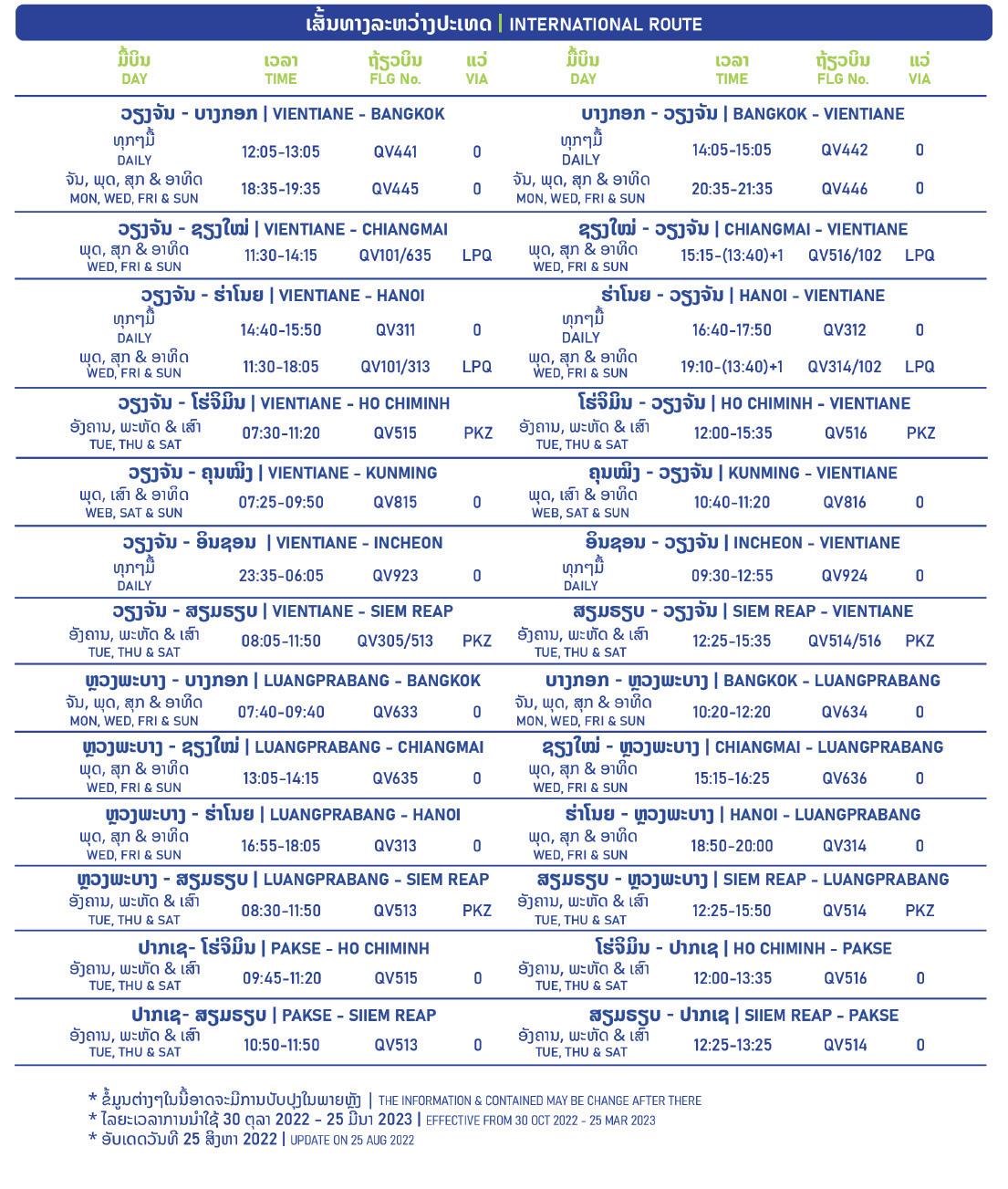
TIMETABLE 66

1626 www.laoairlines.com WhatsApp 20 55 54 1626 67



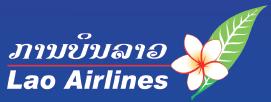

1626 www.laoairlines.com WhatsApp 20 55 54 1626

INTERNATIONAL OFFICES DOMESTIC OFFICES


LAO AIRLINES OFFICES
1626 www.laoairlines.com WhatsApp 20 55 54 1626 71







1626 www.laoairlines.com WhatsApp 20 55 54 1626








1626 www.laoairlines.com WhatsApp 20 55 54 1626





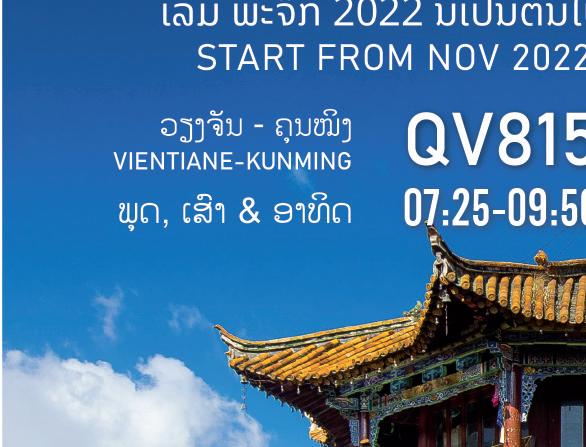
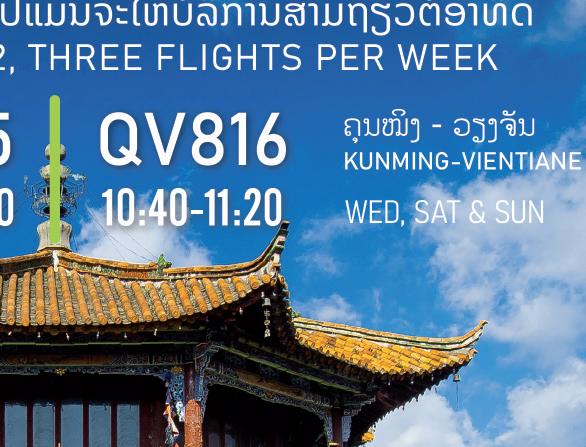

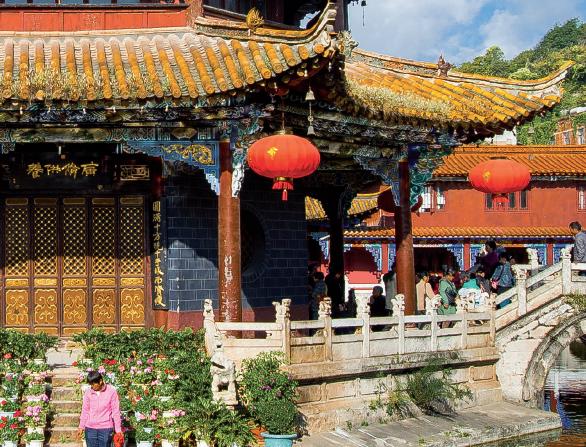





1626 www.laoairlines.com WhatsApp 20 55 54 1626
























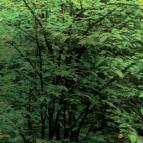
















1626 www.laoairlines.com WhatsApp 20 55 54 1626













































































































































































 PHOTOGRAPHS BY PHOONSAB THEVONGSA
PHOTOGRAPHS BY PHOONSAB THEVONGSA













 Located a 15-minute drive from Luang Prabang International Airport, Parasol Blanc is an eco-friendly hotel, and offers 30 comfortable rooms, all with private balcony, surrounded by a lush abundant tropical garden, a swimming-pool and a beautiful Lotus pond.
Located a 15-minute drive from Luang Prabang International Airport, Parasol Blanc is an eco-friendly hotel, and offers 30 comfortable rooms, all with private balcony, surrounded by a lush abundant tropical garden, a swimming-pool and a beautiful Lotus pond.






















































 TEXT BY SEBASTIEN DUFFILLOT
TEXT BY SEBASTIEN DUFFILLOT




 PHOTOGRAPHS BY PAUL WAGER
PHOTOGRAPHS BY PAUL WAGER



















































 TEXT BY JASON ROLAN
TEXT BY JASON ROLAN






 PHOTOGRAPHS BY PHOONSAB THEVONGSA
PHOTOGRAPHS BY PHOONSAB THEVONGSA





























 TEXT BY ALBERT LEEFLANG & SEBASTIEN DUFFILLOT
TEXT BY ALBERT LEEFLANG & SEBASTIEN DUFFILLOT
 PHOTOGRAPHS BY ALBERT LEEFLANG / SEBASTIEN DUFFILLOT
PHOTOGRAPHS BY ALBERT LEEFLANG / SEBASTIEN DUFFILLOT

 A scenic outcropping overlooking a valley in Sayaboury
A scenic outcropping overlooking a valley in Sayaboury





































 TEXT
TEXT


















































































